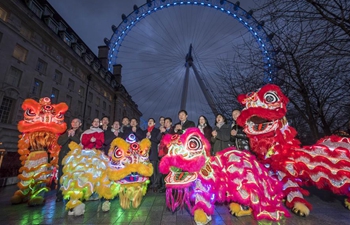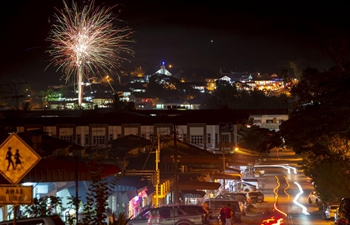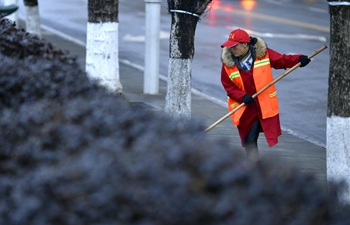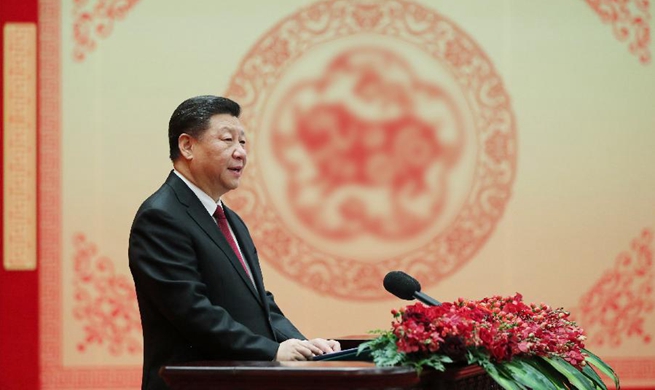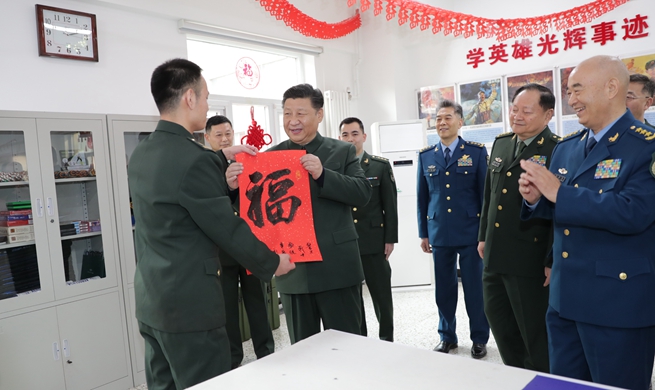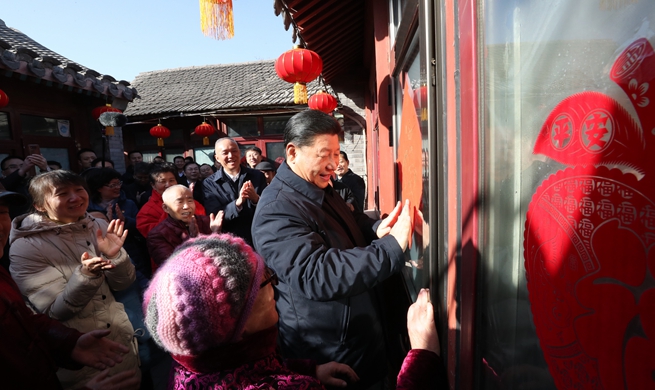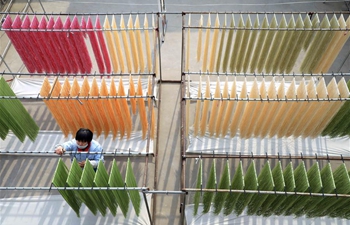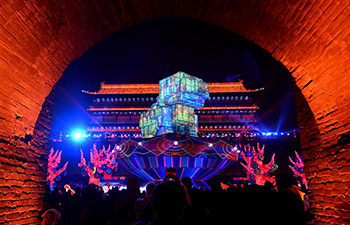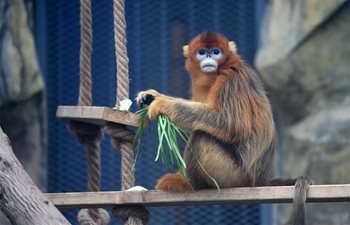BEIJING, Feb. 5 (Xinhua) -- Over the past 12 years, while the global gaze was on China's new generation of advanced aircraft, artist Gong Haoqin focused on broken wings, battered propellers and abandoned warplanes covered in rust.
He compares the exposed wires of "old heroes" to blood vessels, and the rust stains to wounds. He says his pictures are a personal tribute to the sacrifices of the aircraft and pilots.
After gaining a doctorate from Tsinghua University's Academy of Art and Design in 2007, Gong worked as an associate professor at Beihang University, which specializes in aeronautical and astronautical education and research.
He gained fame in 2016 for his sepia, monochromatic drawings of the legendary Flying Tigers, a group of American pilots who volunteered to help China's air force fight the invading Japanese from 1941 to 1945.
The works were displayed at Diaoyutai State Guesthouse in China, and the Reagan National Airport and Radford University in the United States.
He spent five years researching and visiting veterans and their families, learning how retired U.S. Army Corps officer Claire Lee Chennault brought fighter planes to China, along with American pilots and ground crews. They joined the war and were greeted by the Chinese with love and esteem.
He depicted the moments when Chinese troops fought side by side with Americans, as well as many warm scenes of interaction between the aviators and Chinese civilians.
One painting depicts an elderly Chinese man getting a light for his cigarette from a U.S. Army sergeant after the forces of the two countries expelled the Japanese from Tengchong, a border city in southwest China, in 1944.
"A painter also can record history," Gong says.
Unlike other aviation painters, Gong seldom draws just an aircraft. To commemorate the start of a direct air route linking Beijing, Chengdu and Lhasa, capital of Tibet Autonomous Region, in 1965, he painted a plane that flew the route at the top of the picture, with a joyful Tibetan mother carrying a baby, the Potala Palace and snow-covered mountains below.
"Although an aircraft is lifeless, Gong's paintings are full of human characters, showing courage, will and dedication," says critic Hou Yaodao. "His works lead viewers to reflect on war, life, mercy and compassion."
In recent years, Gong has painted scenes from China's space exploration, with spacecraft, moon rovers, satellites and astronauts. He has published multiple collections, including "Flying with the Wings of Art", which was displayed during the 58th session of the United Nations Committee on the Peaceful Uses of Outer Space.
He was inspired to combine traditional cultural elements, such as woodcut printing, into his space artworks. Gong drew a constellation of stars on a piece of paper before carving it on a board. Then, he printed these on paper and sketched in new subjects with brown pencil.
He loves to painted modern subjects with legendary figures. One work shows Chinese astronaut Zhai Zhigang, who carried out a spacewalk from Shenzhou-7, encountering a group of flying apsaras from a Dunhuang fresco.
In another painting, lunar rover Yutu travels on the moon with the white pet rabbit of Chang'e, the moon goddess in Chinese folklore who lent her name to the Chinese lunar mission.
"The Chinese were one of the first peoples to respect and study space," Gong says. He wants his works to show the connection between China's remarkable aerospace achievements and the visualization of the universe since ancient times.
Gong has a grand plan to complete a record of aerospace history in his lifetime. He has named the plan "Flying Civilization".
"People love flight because they love freedom," says Gong. "That is also the charm of aerospace painting."




